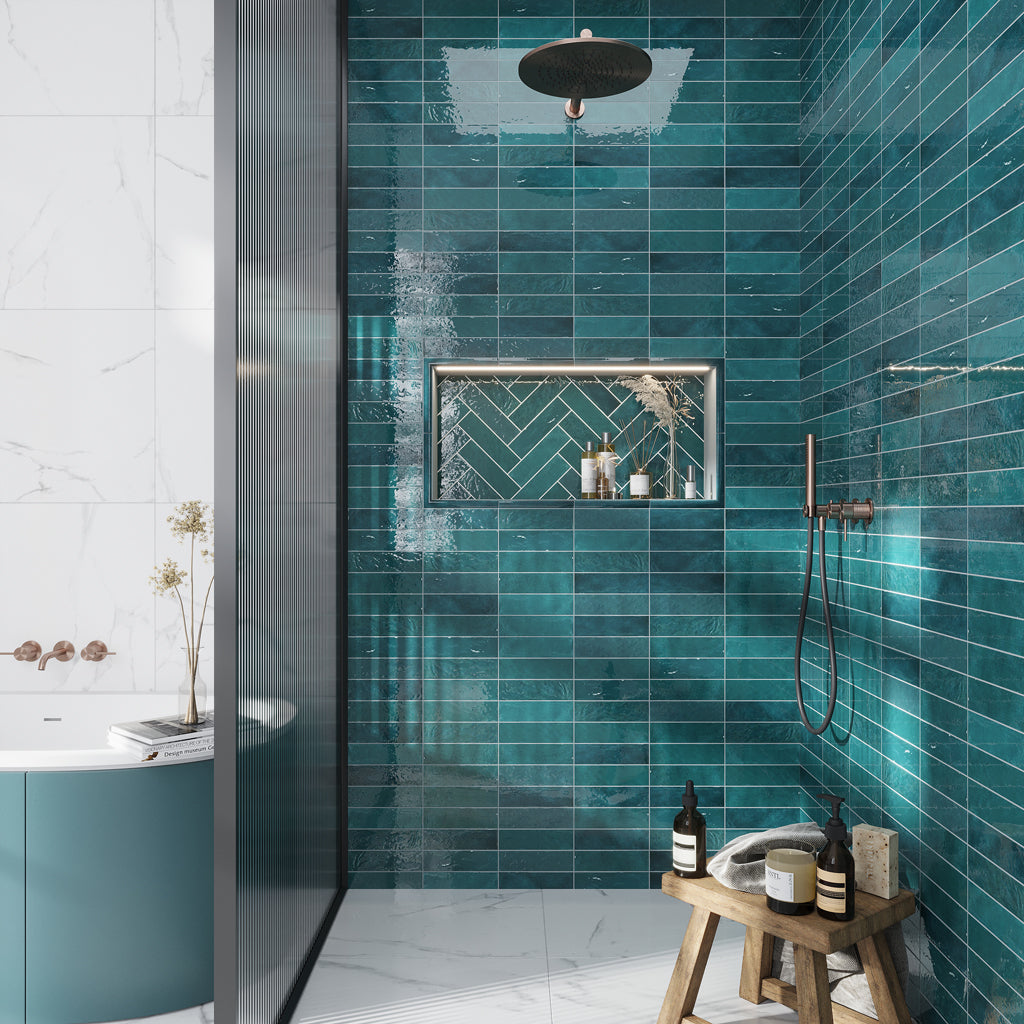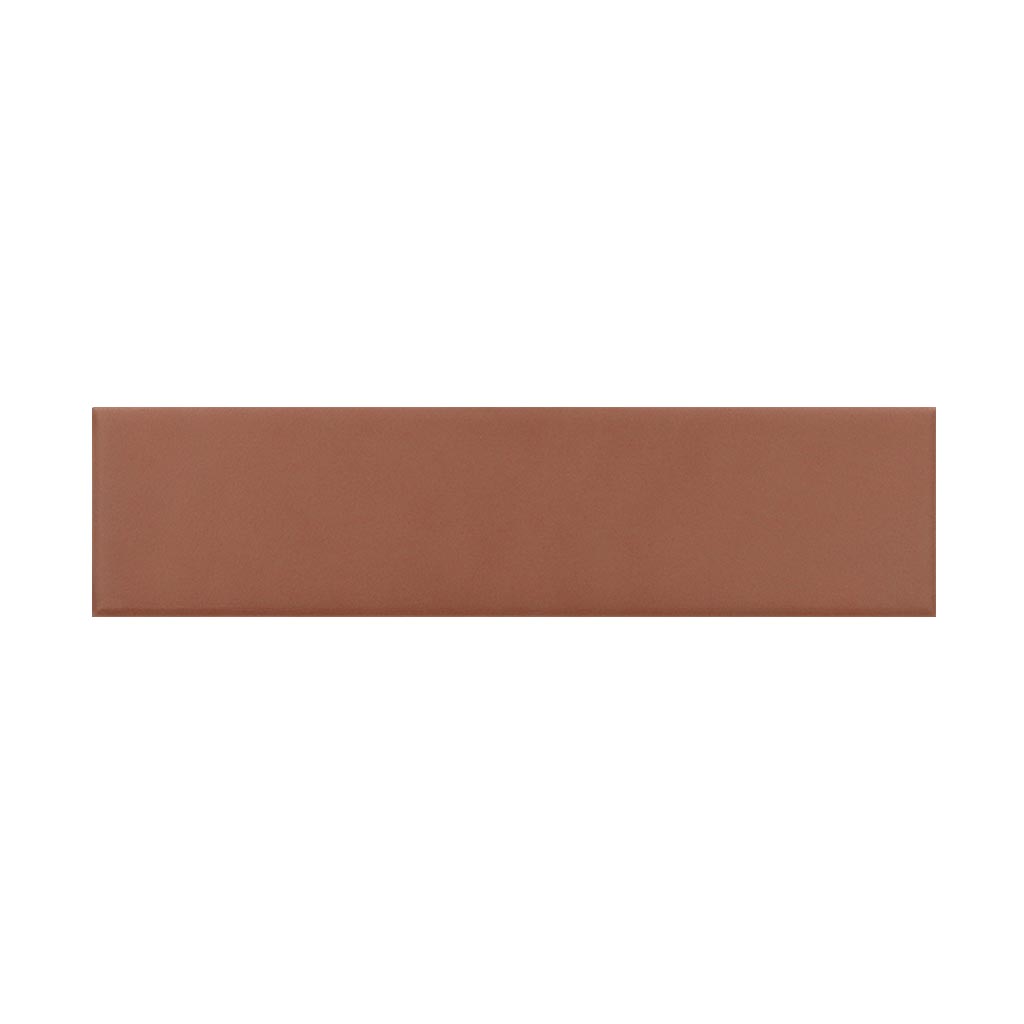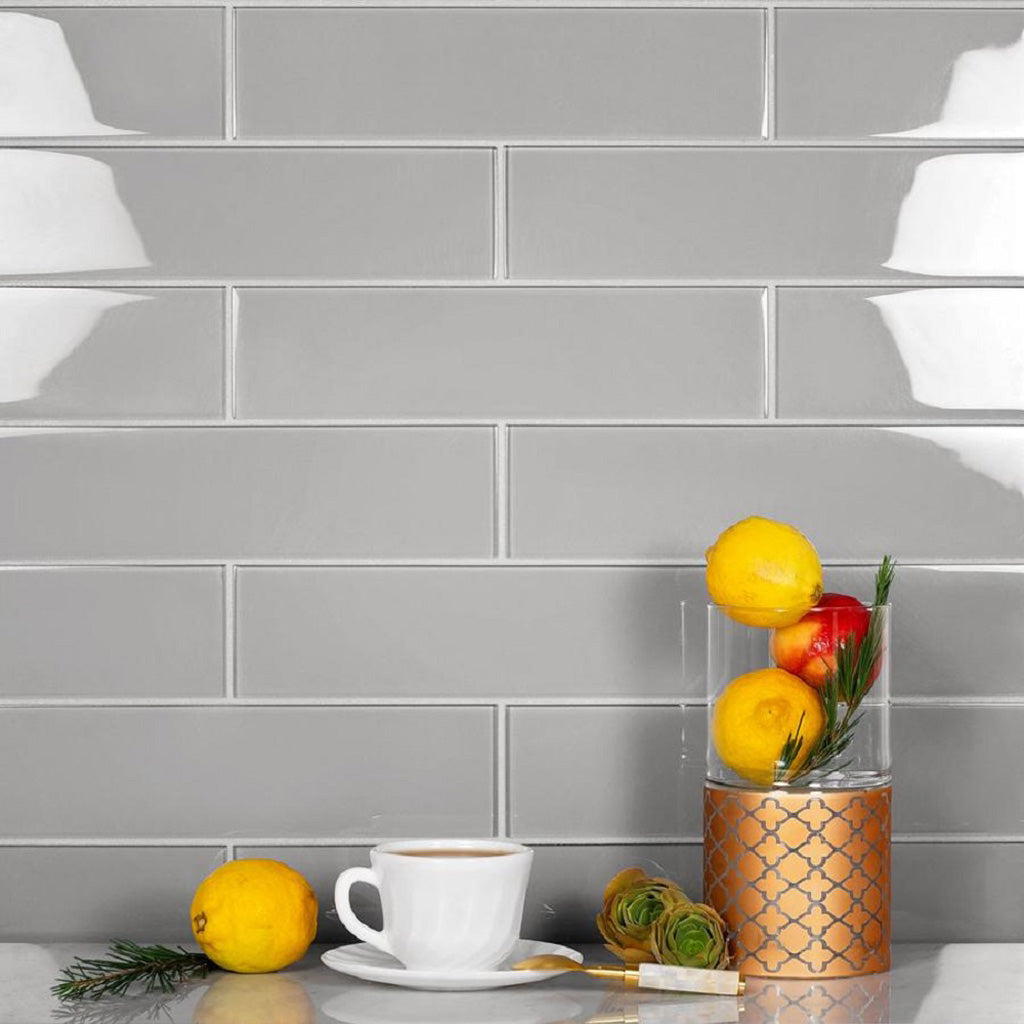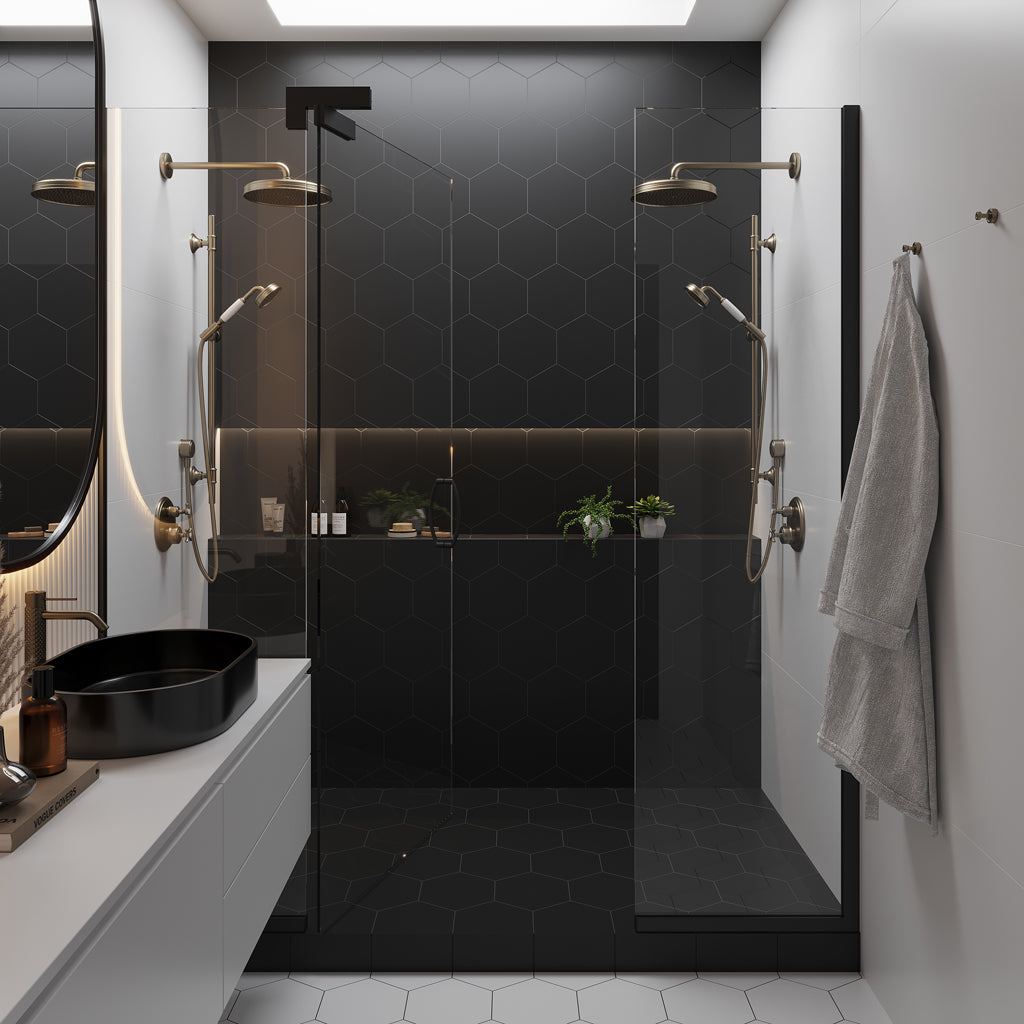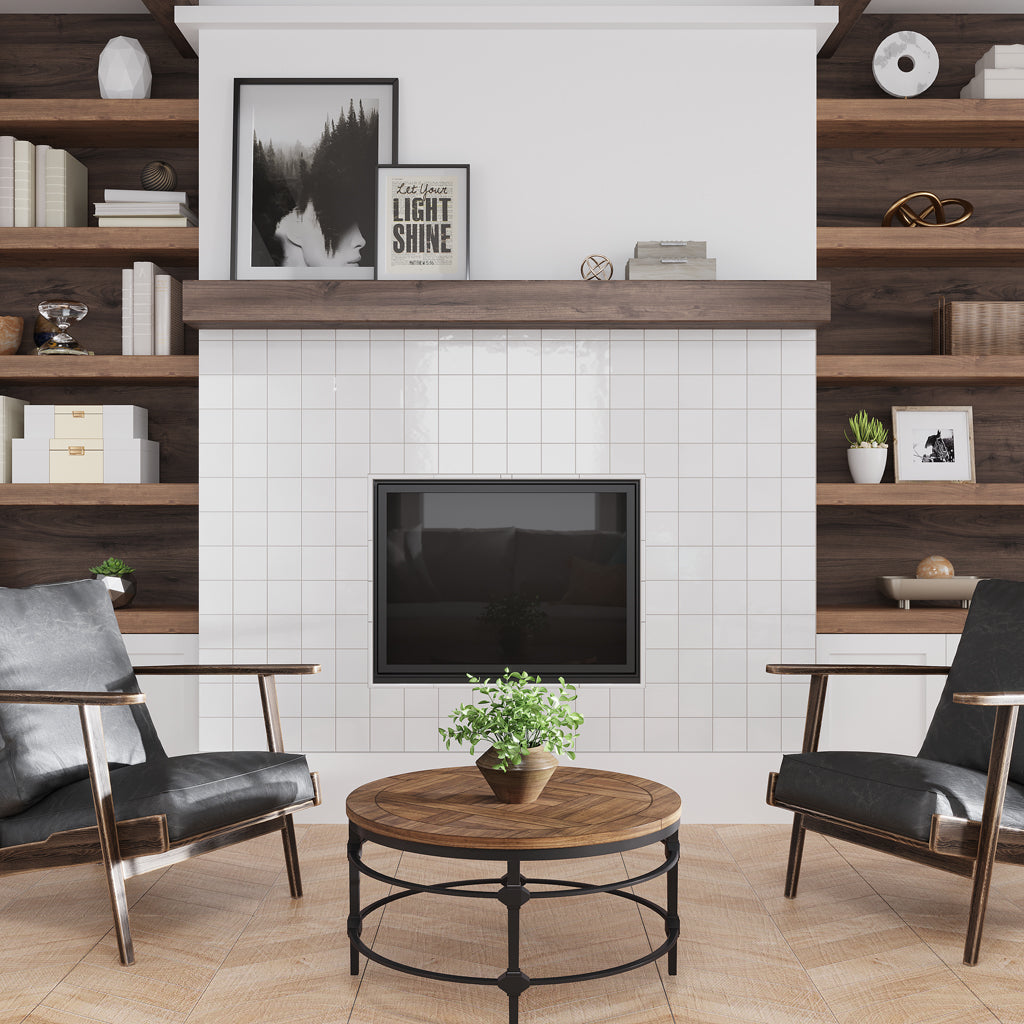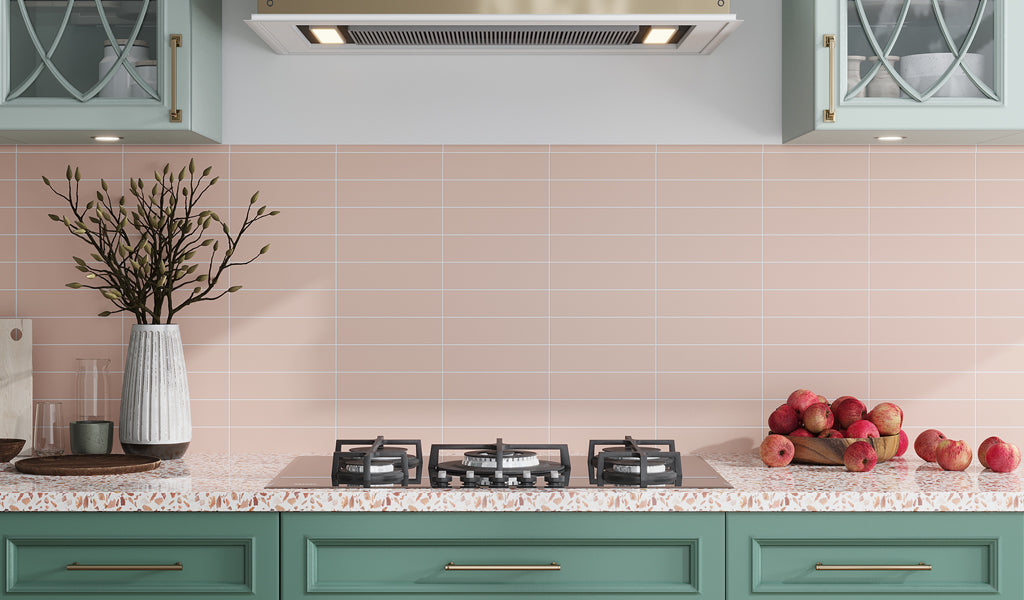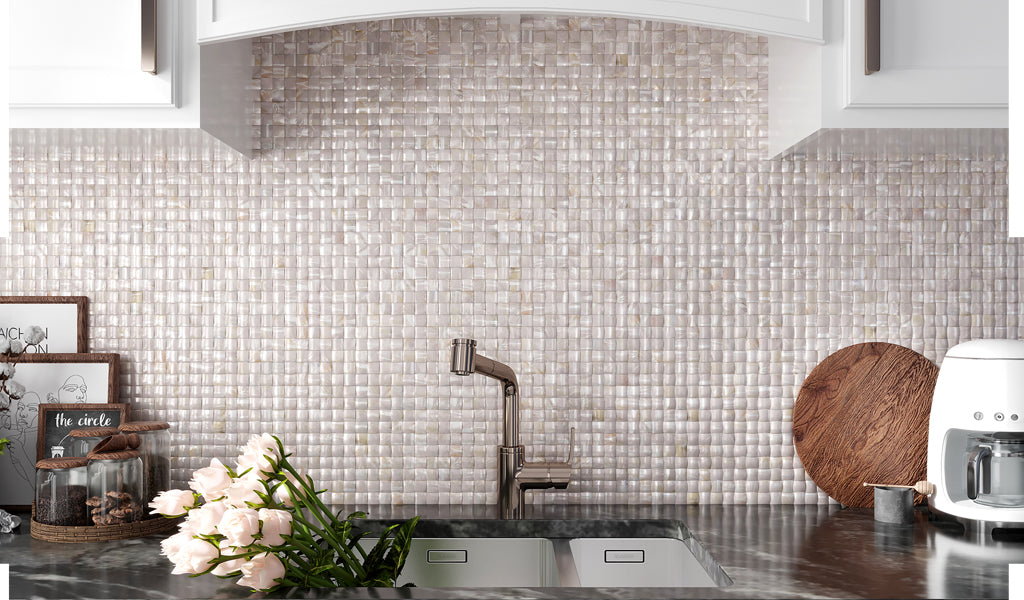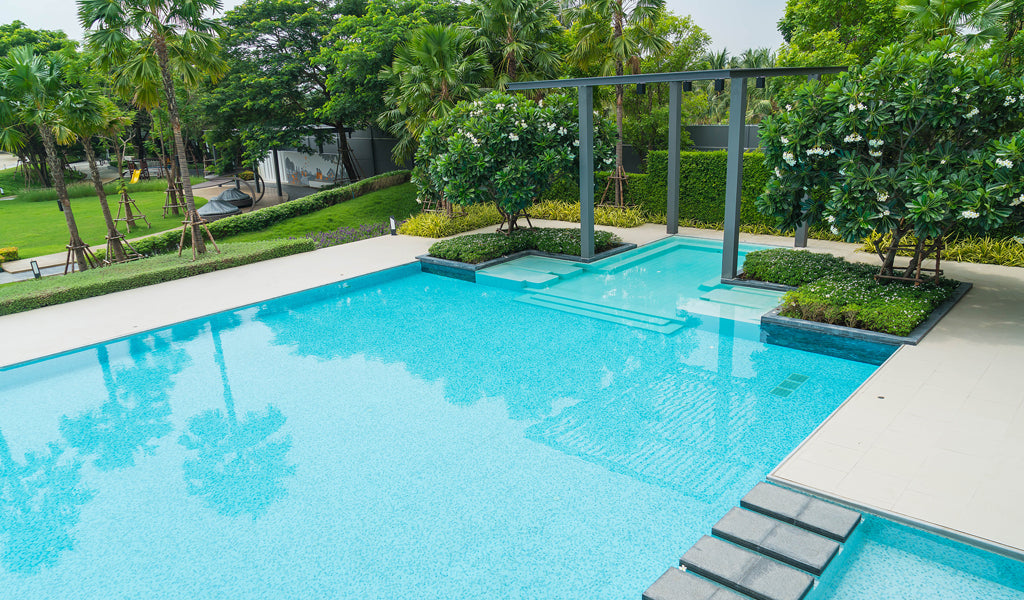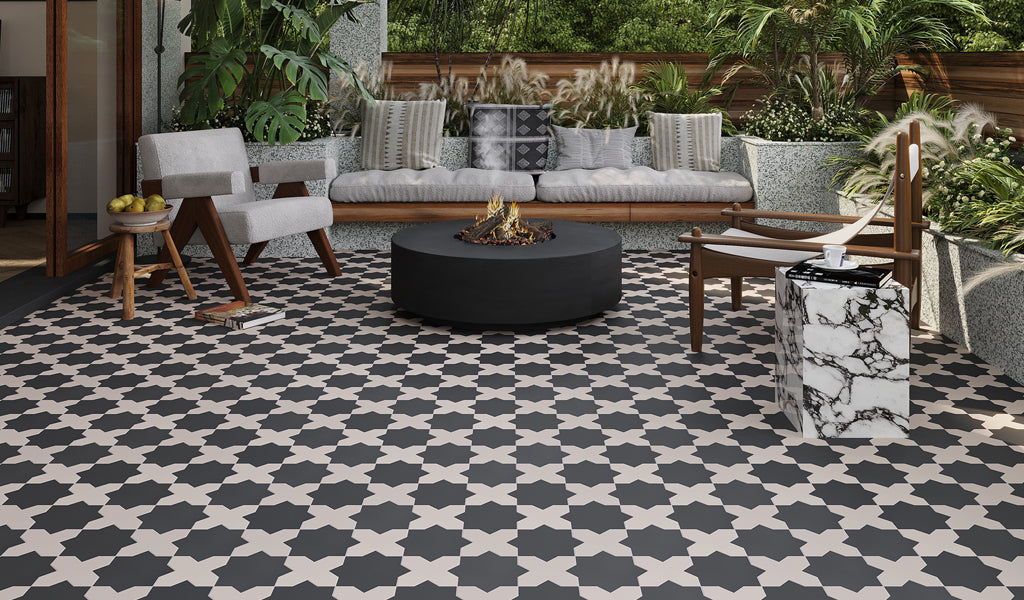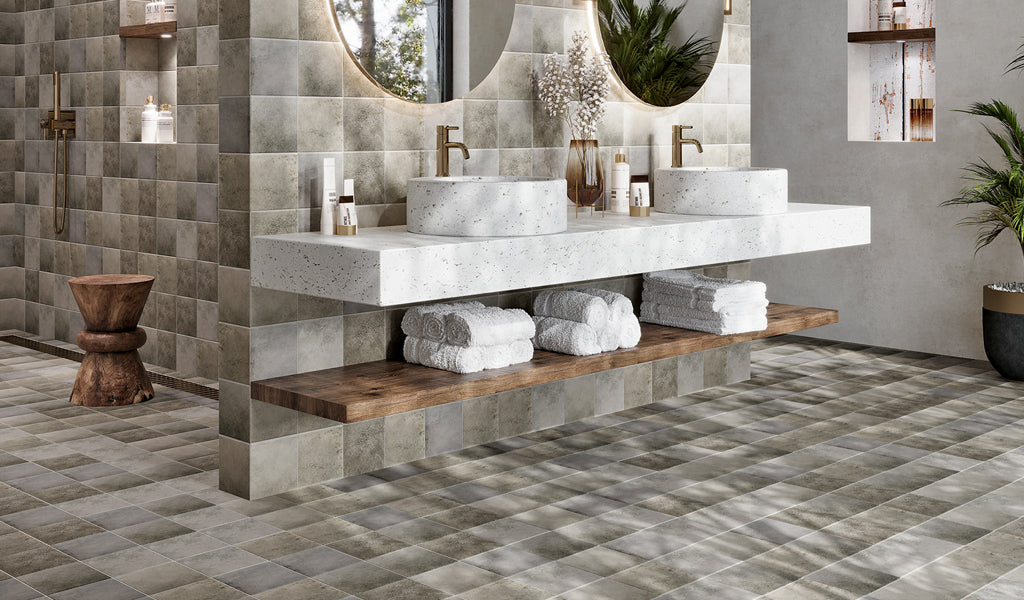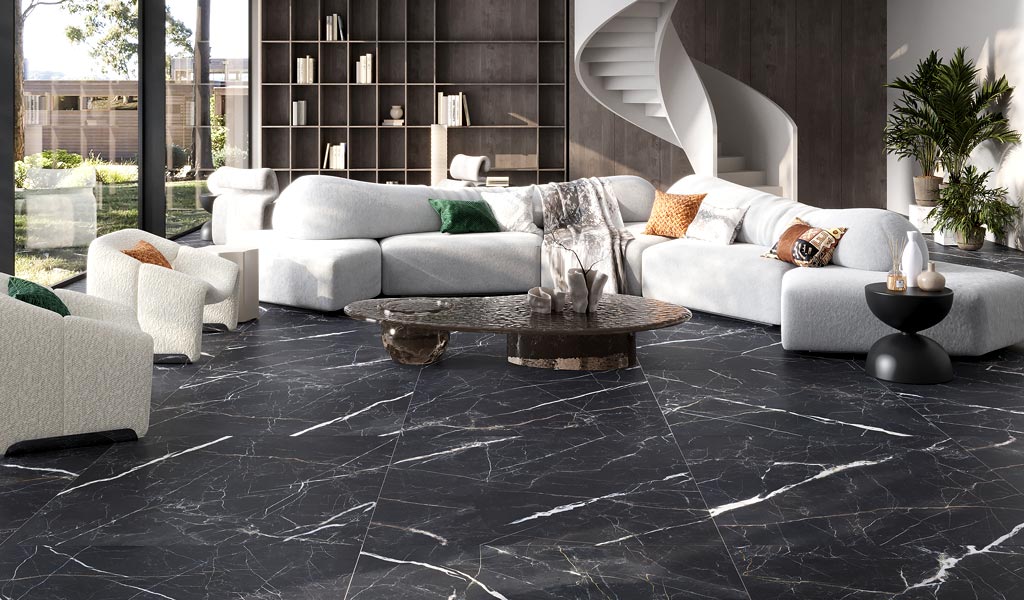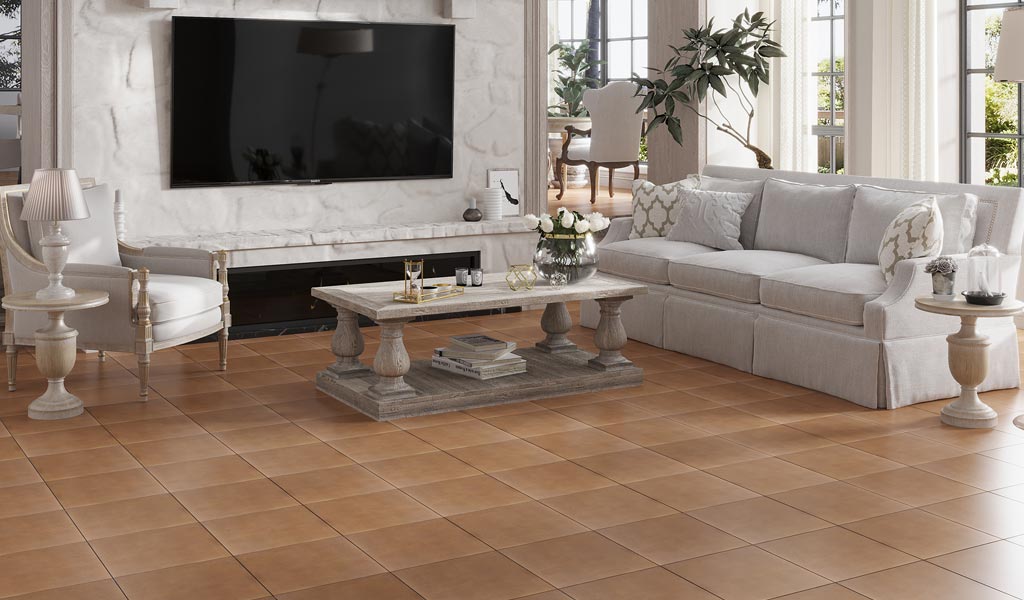Glossy vs Matte Finish Tiles: What Is the Difference
Nov 15, 2024In the realm of interior design, the choice between matte vs glossy tiles often leaves people wondering what finish is best for their space. Each tile style offers something unique, making the decision-making process challenging.
Glossy and matte finish can be found in various materials, including porcelain, ceramic, marble, and glass tile - as well as many colors, shapes, and sizes. In this blog post, we offer insights into the distinctive features that set glossy vs matte tiles apart to help you make an informed choice.
Comparing Glossy and Matte Finish Tiles
Both matte and glossy finish tiles feature a remarkable melding of style and functionality, rendering them appropriate for a myriad of applications and décor settings.
| Glossy Finish Tiles | Matte Finish Tiles |
|---|---|
| Reflects natural light in bright highlights | Absorbs and diffuses natural light |
| Stains and marks are easy to spot | Conceals stains, smudges, and scratches |
| Common finish for ceramic, porcelain, marble, glass, and stone | Common finish for ceramic, porcelain, stone, glass, and metal |
| Can be slippery when wet | Provides better traction and slip resistance |
| Ideal for backsplash, wall, fireplace surround, and low/medium traffic flooring | Ideal for shower, patio, deck, and high traffic flooring |
A glossy tile finish is achieved through the application of a shiny, glass-like coating. These tiles have been long admired for their radiant and exquisite appearance, making them a preferred choice for homeowners and designers who seek a lustrous surface that reflects light and adds striking depth. From vibrant hues to muted tones, high-sheen tilework fits seamlessly into various décor themes.
Not only does a highly polished glaze enhance the look and feel of the room, but it also provides a durable, protective layer against wear, stains, and moisture. This means glossy finish tiles can be used in powder rooms, bathrooms, kitchens, and for low-traffic flooring.
Matte tile, on the other hand, continues to gain widespread popularity, attracting anyone looking to adorn their living space with a refined and understated aesthetic. Referred to as a non-glossy or flat tile, they lack the reflective quality found in glossy tiles but have a soft and velvety texture. They are versatile, resistant to stains and smudges, and provide better slip resistance, making them a stylish and practical choice for flooring in high-traffic and wet areas, indoors and outdoors.
Ideal Spaces for Matte and Glossy Tiles
In understanding the difference between glossy vs matte tiles, it's equally important to know which finish works best in what area, so you can confidently choose tiles that align with your design vision.
1. Applications for glossy tiles
- Backsplashes: The reflective quality of high-gloss tile adds a glamorous touch to bathroom and kitchen backsplashes.
- Accent wall: For a striking wall feature, a polished surface delivers just that. Be it an accent wall in the entryway, living room, or bedroom.
- Fireplace surround: Fireplace tile in a shiny finish can anchor your décor scheme and become the room's focal point.
- Powder room: The half bath is the perfect place to express your unique style. A bold wall tile design sets a vibrant tone, while the mirror-like finish elevates the appeal of the room.
- Low/medium traffic flooring: Glossy finish tiles work well as flooring in minimal impact areas such as formal dining rooms and guest bedrooms.
2. Applications for matte tiles
- Entryways: Due to greater traction, matte finish tiles are a brilliant choice for areas prone to tracking in dirt.
- Kitchen and bathroom: Better slip resistance in moisture-prone areas reduces the risks of slips and falls.
- Study area and home office: A matte finish evokes a laid-back ambiance ideal for areas where more focus is essential.
- Patio and pool surround: Non-shiny tiles provide a safer footing for outdoor applications, especially wet floors.
- High-traffic areas: For areas meant to withstand daily wear and tear, matte floor tiles are a great option. They're highly scratch-resistant and hide marks and dirt better than glossy finish tiles.
5 Ways Glossy Tiles Can Make an Impact
When comparing glossy vs matte tiles, there's no denying the elegance a high-sheen surface delivers. Here are five ways this chic tile finish makes an impact:
- Sleek, luxurious look: The shining brilliance of glossy tiles exudes a radiant glow that envelops and warms up the room. Whether used as a kitchen backsplash, living room floor, or bathroom tile, it sets an inviting atmosphere.
- Diverse styles: A glossy finish is available with ceramic, glass, marble, and porcelain tile options. It looks just as stunning in a traditional space as it does in a modern setting.
- Enhanced brightness: Glossy finish tiles reflect and bounce light across the room, making a small space feel open, airy, and bigger than it really is.
- Stylish wall application: For wall colors and patterns that stand out, glossy tiles are the way to go and will make an eye-catching statement.
- Easy maintenance: The smooth, glass-like texture repels dirt and stains, making glossy tiles easy to clean.
5 Ways Matte Tiles Can Make an Impact
Looking for something more understated? Matte finish tiles may just be the perfect choice for your space:
- Minimized glare: Due to their non-shiny surface, matte tiles add a laid-back feel to spaces with abundant natural light. It is subdued yet sophisticated.
- Versatile style: Find porcelain, ceramic, glass, and stone tile in a matte finish, perfect for both walls and floors, indoors and outdoors, and a diverse range of décor styles.
- Natural texture: The rough layer on matte floors not only infuses textural dimension but also gives the tile a very strong character. Its natural and rustic feel is even more pronounced in stone and hardwood tile.
- Better slip-resistance: Speaking of texture, matte finish flooring provides better grip in high-traffic and wet areas. This, in turn, reduces the menace of accidents.
- Concealed imperfections: Thanks to a non-shiny face, matte tiles can mask dirt, marks, and other flaws better, ensuring a seamless appearance throughout. It is simply an excellent selection when it comes to wear and tear.
Combining Glossy Tiles and Matte Tiles
Bois Chevron 23.77 in. x 47.25 in. Matte Maple Porcelain Rectangular Wall and Floor Tile paired with Silken 3.94 in. x 3.94 in. Glossy White Ceramic Square Wall and Floor Tile.
The light-reflecting shine of glossy tile combined with the understated softness of matte tile introduces flair, depth, and dimension to any space. This visual effect works especially in focal aspects of the home, including the kitchen backsplash, fireplace surround, and bathroom walls and floors.
The best part about blending the two is that you can determine how much gloss or matte you want—whether a pronounced contrast between the two or a subtle spattering appearance. Below are a few ways to go about it:
- Play with different scales: Juxtapose large matte floor tiles and small glossy wall tiles for an interesting contrast in size and finish.
- Use same tone, different shape: Choose matte and glossy tiles similar in tone but different patterns. For instance, matte hexagon tile flooring paired with glossy penny-round wall tiles.
- Create a chessboard effect: Alternate matte and glossy tiles with a chessboard design. Black and white tile is a great option to consider.
- Try glossy border tiles: Add a decorative border of glossy finish tiles to a matte tile installation for more visual appeal.
- Choose mixed-material tiles: Mosaic tiles that combine different materials, say stone and glass or glass and metal, allow you to add texture without fussing over pairing different styles. Our White Polished and Honed 11.8 in. x 11.8 in. Linear Glass and Metal Mosaic Tile and Brown 11.7-in x 11.7-in Multi-finish Glass; Stone Versailles Patterned Floor and Wall Tile are great examples of mixing matte and glossy.
Tips for Cleaning Glossy and Matte Tiles
The best way to keep glossy or mate flooring pristine is to sweep or vacuum dust and loose dirt. Mopping the floors with a solution of warm water and a pH-neutral cleaner will effectively remove any marks or stains. Matte tiles can get away with being cleaned once a week, while glossy finish tiles require frequent upkeep as they show dirt easily.
Backsplash tile in a glossy or matte finish is just as easy to clean and maintain. Simply wipe down the tiles with a soft cloth dampened in warm water and mild tile cleaner. Avoid harsh acidic cleaners and abrasive tools as they can damage the top layer of the tile.
Cleaning shower wall tile in a matte finish can be a tricky job, as the rough finish is prone to soap marks and superficial patina. Using a specialized tile cleaner will help make them appear spotless. However, you will need to scrub a lot more to remove buildup. We recommend a soft brush to maintain the quality, texture, and color of the tile. Dry the tile after cleaning to prevent water spots—and ensure grout lines are sealed to prevent stains and discoloration.
If you have installed a matte or glossy marble tile, make sure to seal your walls or floors every 6-12 months. Natural stones aren't 100% non-porous—this step protects the tiles from scratches, stains, and water absorption.
Which Is Better, Glossy Tiles vs Matte Tiles?
Ultimately, the choice between matte vs glossy tiles comes down to style preference, intended use, and requirements of the space. Highly polished tiles are best for wall applications where enhanced brightness, aesthetic versatility, and ease of maintenance are a priority. In contrast, matte finish tiles are ideal for areas where robustness and slip resistance are crucial.
Conclusion
In choosing between glossy tiles vs matte tiles, consider the application and the style you want to achieve. Both finishes are unique in their own way, with glossy tiles offering a more lustrous and radiant look and matte tiles delivering a subdued finish. Explore Apollo Tile's extensive range to find the best options that suit your unique taste: from sleek and modern to classic and elegant. Sign up for our Pro Membership Program and enjoy exclusive perks, including a 5% discount on your next order.
Frequently Asked Questions:
1. Are glossy floor tiles slippery when wet?
A smooth, glossy surface can become slippery, particularly in moisture-prone areas. Note that not all glossy finish tiles are created equally. There are plenty of options with anti-slip properties that enhance traction and are well-suited for bathroom, kitchen, and entryway flooring.
2. Does glossy tile show more dirt, marks, and scratches?
Glossy tiles have a shiny, reflective surface that tends to reveal dirt, scratches, and other imperfections more than matte finish tiles. However, they are just as easy to clean and keep in a pristine state.
3. Will matte tile flooring dull my living space?
Not at all. While matte finish tiles are more subdued, they lend a refined and cozy effect that is perfect for creating an inviting contemporary space.
4. How can I make my glossy tile shine again?
A high-gloss tile sealer will add sheen to dull wall and floor tiles. This is an efficient solution that lasts years compared to fast-drying standard acrylics.
5. Should the bathroom be made of matte or glossy finish tiles?
For an area in frequent contact with water and humidity, such as the bathroom, matte flooring is a practical choice as it offers better traction underfoot. Glossy tiles are brighter and atmospheric, which is perfect for wall installation.
6. What products does Apollo Tile have for glossy and matte tiles?
Our porcelain, marble, glass, stone, and ceramic tile options are available in glossy and matte finish.

